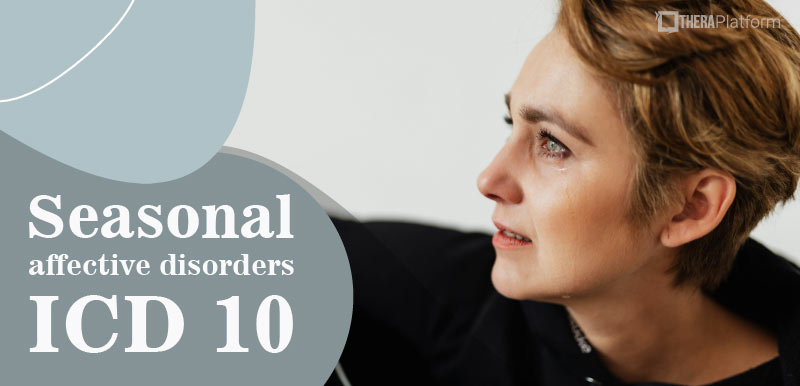OCD ICD 10 code

OCD ICD 10 code is used for diagnosing and treating Obsessive-Compulsive Disorder (OCD) – a highly debilitating mental health condition affecting millions of people each year.
Summary
- The ICD-10 system classifies OCD under code F42, with subcategories based on whether symptoms are predominantly obsessive, compulsive, or mixed, helping clinicians ensure accurate diagnosis and insurance billing. Enrolling in an insurance billing course for therapists can help providers enhance their knowledge.
- OCD is characterized by intrusive obsessive thoughts and repetitive compulsive behaviors, which significantly impact daily functioning and are often performed to alleviate anxiety.
- OCD frequently coexists with other disorders such as generalized anxiety disorder, obsessive-compulsive personality disorder, and hoarding disorder, making accurate assessment and diagnosis crucial for effective treatment.
- Clinicians must differentiate between cultural or religious rituals and OCD symptoms, ensure informed consent for exposure therapy, and handle intrusive thoughts related to mandatory reporting with clinical judgment and confidentiality in mind.
- By leveraging an EHR like TheraPlatform for efficient documentation and claim submission, therapists can maintain accurate records.
→ Click here to enroll in our free on-demand Insurance Billing for Therapists video course [Enroll Now]
Approximately 2.3 percent of people in the U.S. receive an OCD ICD-10 diagnosis in their lifetimes, with over one percent possessing the diagnosis in the past year. The ICD-10 (International Statistical Classification of Diseases and Related Health Problems, 10th Revision) is a worldwide coding system that categorizes OCD—and other medical disorders—to aid clinicians in evaluation and treatment.
The uniformity of the ICD criteria allows practitioners across the globe to be consistent in their assessment, thus increasing the reliability and validity of the OCD diagnosis. Additionally, ICD-10 codes have high practical utility, in that they are used for insurance billing.
Streamline your insurance billing with One EHR
- Claim batching
- Auto claims
- Automated EOB & ERA
- Real-time claim validation
- Real-time claim tracking
- Aging and other reports

What is Obsessive-Compulsive Disorder?
OCD is a psychiatric disorder characterized by the presence of persistent irrational thoughts (obsessions) and repetitive behaviors (compulsions). It is widely theorized that compulsions are used to relieve anxiety caused by obsessive thoughts. This cycle of obsession and compulsion is taken to an extreme and becomes disruptive to daily functioning. For example, a person may be hours late to work because they repeatedly washed their hands at home due to obsessive worries over spreading germs and becoming sick.
OCD ICD 10 Criteria
The following are the primary signs and symptoms of OCD, according to the ICD-10:
- Obsessions and/or compulsions must be present most days for at least two successive weeks and be a significant source of distress.
- Obsessions have the following characteristics:
- They must be recognized as the individual's own thoughts or impulses.
- They are intrusive and the person finds them difficult to resist, no matter how senseless the content.
- The thoughts are unpleasantly repetitive
- Compulsions have the following characteristics:
- The function of the compulsion is to prevent an unlikely event from occurring (e.g., injury, illness), which the individual fears will take place if they don’t perform the compulsion. Think of a superstition on steroids.
- The thought of carrying out the compulsive act must not in itself be pleasurable, even though it will bring relief.
- The compulsion is usually recognized by the patient as pointless in and of itself.
- If compulsive acts are resisted, the associated anxiety worsens.
- Compulsive acts are disruptive to functioning.
- Obsessive-Compulsive Disorder typically has an age of onset in the late teens and early twenties, with onset after age 35 being less common. In cases of late-onset, there is often a history of sub-clinical symptomatology.
It should be noted that the OCD ICD 10 requirements are likely to change with the advent of the updated ICD-11, which will be utilized in the U.S. in the next year. The ICD-11 is already used in other parts of the world.
Some of the most noteworthy changes involve the following:- No length requirement of at least two weeks of symptoms for a diagnosis.
- Obsessions and compulsions must meet a threshold for time consumption (e.g., take up more than 1 hour per day).
- Compulsions are formally recognized as a response to obsessions. Although this has long been suspected, the relationship is not explicitly stated in the ICD-10.
Watch this video to learn common insurance billing struggles and solutions
→ Start My Free Trial
→ Start My Free Trial
How is the OCD ICD 10 code classified?
The following OCD ICD 10 codes and some of its subtypes:
- F42 The general code for OCD
- F42.0 OCD with Predominantly Obsessional Thoughts
This subtype of OCD is characterized by obsessions being predominant over compulsions. Obsessions take the form of ideas, mental images, or impulses to act, which are almost always highly distressing to the subject. Sometimes the ideas are marked by extreme indecisiveness, associated with an inability to make decisions necessary for daily living.
F42.1 OCD ICD 10 code for clients with Predominantly Compulsive Acts
This type of OCD ICD 10 code is characterized by compulsions prevailing over obsessive thinking. The majority of compulsive acts are concerned with cleaning, checking, or orderliness. The compulsive behavior is usually an attempt to avert a perceived, although irrational, danger.
F42.2 OCD ICD 10 code for Mixed Obsessional Thoughts and Acts
A more equal mix of the obsessional and compulsive subtypes.
F42.9 OCD ICD 10 code for Obsessive-compulsive Disorder, Unspecified
The unspecified moniker is used for OCD symptoms that don’t neatly fit into any one type but are still significant enough to be considered for a clinical diagnosis of OCD.
Note: Although certain labels, such as hoarding OCD, cleaning OCD, and order OCD are often used in pop psychology, these are not officially recognized through OCD ICD-10 codes.
Practice Management + EHR + Telehealth
Mange more in less time in your practice with TheraPlatform

Diagnostic challenges with OCD
One of the challenges of diagnosing OCD is the high amount of comorbidity with other disorders. Almost 70 percent of people with OCD have other psychiatric disorders.
What’s more, these other disorders can look quite similar to clinical OCD.
Let’s take a look at a few disorders that are commonly confused with OCD:
- Obsessive-compulsive personality disorder (F60.5). This disorder is characterized by rigid personality traits, rather than fueled by irrational beliefs. For example, a person may have a perfectionistic personality where their standards are so high they spend substantial chunks of time on tasks that others complete quickly. People with OCPD often have little insight into their behavior; they may not recognize that it is problematic and are generally more resistant to pursuing treatment.
- Generalized anxiety disorder (F41.1). Obsessional thinking causes a lot of anxiety. So much so that OCD used to be classified as an anxiety disorder. However, people with generalized anxiety are worried about a lot of real-life concerns rather than specific obsessions and they usually don’t exhibit any compulsive behavior.
- Hoarding disorder (F42.3). Although people with OCD can hoard as a result of their obsessions, it is distinct from hoarding disorder. People with hoarding disorder don’t have intrusive and repetitive thoughts and there is no ritual to control their thoughts. Instead, hoarding behavior is considered pleasurable and there is little insight into its problematic nature.
To provide accurate diagnoses, clinicians must be familiar with the criteria for OCD and other similar disorders. It is crucial to obtain a complete diagnostic picture, including a full psychiatric history. Further testing may be warranted in cases with a confusing differential diagnosis. Treatment planning depends on accurate assessment. Anxiety and personality disorders are going to require a very different focus than therapy for OCD.
Possible ethical concerns in diagnosing OCD
Therapists must be aware of the following ethical concerns when assessing and treating a client for OCD:
- Certain religious rituals might appear to be OCD. This issue highlights the importance of cultural and religious competence in therapy. Specific religious practices can be rigid and repetitive and the therapist must be able to determine if it is scrupulosity, which is a form of OCD, or just someone being very religious. For instance, in orthodox Judaism, hand washing and repetitive prayer rituals can easily appear to be OCD behaviors. It is up to the therapist to understand the client’s background and find out whether the client is performing these acts due to religious duty or unhealthy obsessions.
- Exposure and response prevention (ERP) can feel cruel. ERP is the evidence-based treatment of choice for OCD. Due to its exposure component, which can be highly anxiety-provoking, clinicians must ensure clients fully understand the possible risks and benefits of the therapy. Additionally, therapists ensure that they are not pushing clients too far, which requires them to seek regular feedback as the process unfolds.
- Respecting client confidentiality when obsessions involve mandatory reporting topics. Some individuals have a form of OCD where they have obsessive thoughts about hurting themselves or other people. Of course, therapists are mandated reporters of such issues, and hearing about these types of obsessions can be very alarming. However, therapists must understand that these clients usually don’t want to hurt anyone. The harm obsessions are just part of their OCD and confidentiality needs to be maintained.
How EHR and practice management software can save you time with insurance billing for therapists
EHRs with integrated billing software and clearing houses, such as TheraPlatform, offer therapists significant advantages in creating an efficient insurance billing process. The key is minimizing the amount of time dedicated to developing, sending, and tracking medical claims through features such as automation and batching.
What are automation and batching?
- Automation refers to setting up software to perform tasks with limited human interaction.
- Batching or performing administrative tasks in blocks of time at once allows you to perform a task from a single entry point with less clicking.
Which billing and medical claim tasks can be automated and batched through billing software?
- Invoices: Create multiple invoices for multiple clients with a click or two of a button or set up auto-invoice creation, and the software will automatically create invoices for you at the preferred time. You can even have the system automatically send invoices to your clients.
- Credit card processing: Charge multiple clients with a click of a button or set up auto credit card billing, and the billing software will automatically charge the card (easier than swiping!)
- Email payment reminders: Never manually send another reminder email for payment again, or skip this altogether by enabling auto credit card charges.
- Automated claim creation and submission: Batch multiple claims with one button click or turn auto claim creation and submission on.
- Live claim validation: The system reviews each claim to catch any human errors before submission, saving you time and reducing rejected claims.
- Automated payment posting: Streamline posting procedures for paid medical claims with ERA. When insurance offers ERA, all their payments will post automatically on TheraPlatform's EHR.
- Tracking: Track payment and profits, including aging invoices, overdue invoices, transactions, billed services, service providers.
Utilizing billing software integrated with an EHR and practice management software can make storing and sharing billing and insurance easy and save providers time when it comes to insurance billing for therapists.
Practice Management + EHR + Telehealth
Mange more in less time in your practice with TheraPlatform

Resources
Theraplatform is an all-in-one EHR, practice management and teletherapy solution that allows you to focus more on patient care. With a 30-day free trial, you have the opportunity to experience Theraplatform for yourself with no credit card required. Cancel anytime. They also support different industries including mental and behavioral health therapists in group practices and solo practices.
More resources
- Therapy resources and worksheets
- Therapy private practice courses
- Ultimate teletherapy ebook
- The Ultimate Insurance Billing Guide for Therapists
- The Ultimate Guide to Starting a Private Therapy Practice
- Mental health credentialing
- Insurance billing 101
- Practice management tools
- Behavioral Health tools
Free video classes
- Free on-demand insurance billing for therapist course
- Free mini video lessons to enhance your private practice
- 9 Admin tasks to automate in your private practice
References
National Institute of Mental Health. Obsessive-Compulsive Disorder. https://www.nimh.nih.gov/health/statistics/obsessive-compulsive-disorder-ocd
Sharma, E., Sharma, L. P., Balachander, S., Lin, B., Manohar, H., Khanna, P., Lu, C., Garg, K., Thomas, T. L., Au, A. C. L., Selles, R. R., Højgaard, D. R. M. A., Skarphedinsson, G., & Stewart, S. E. (2021). Comorbidities in Obsessive-Compulsive Disorder Across the Lifespan: A Systematic Review and Meta-Analysis. Frontiers in psychiatry, 12, 703701. https://doi.org/10.3389/fpsyt.2021.703701
Siev, J (2022). International OCD Foundation. What is OCD & scrupulosity? https://iocdf.org/faith-ocd/what-is-ocd-scrupulosity/
World Health Organization. International Statistical Classification of Diseases and Related Health Problems, 10th Revision. Mental and behavioural disorders: Neurotic, stress-related and somatoform disorders. https://icd.who.int/browse10/2019/en#/F42



